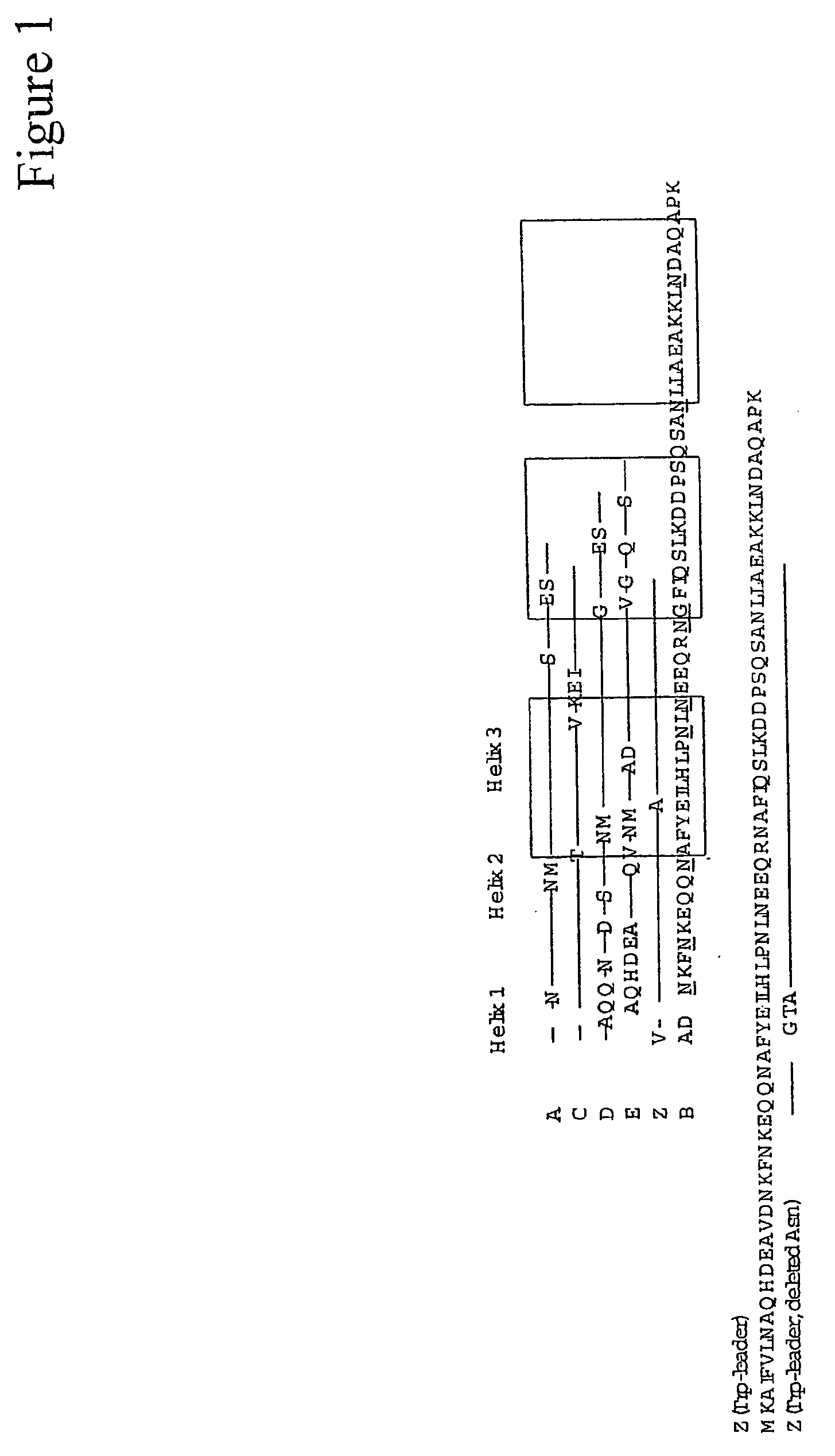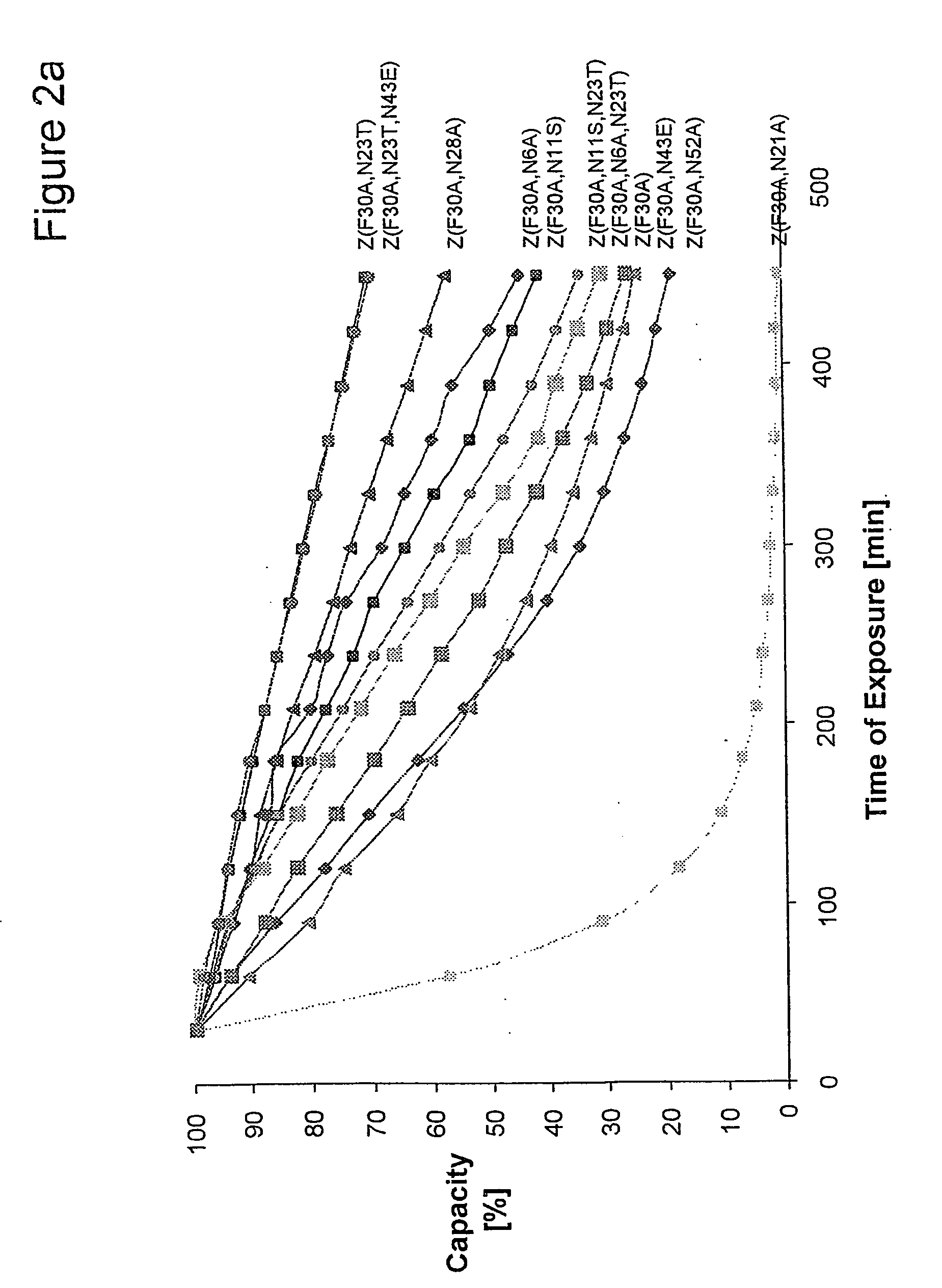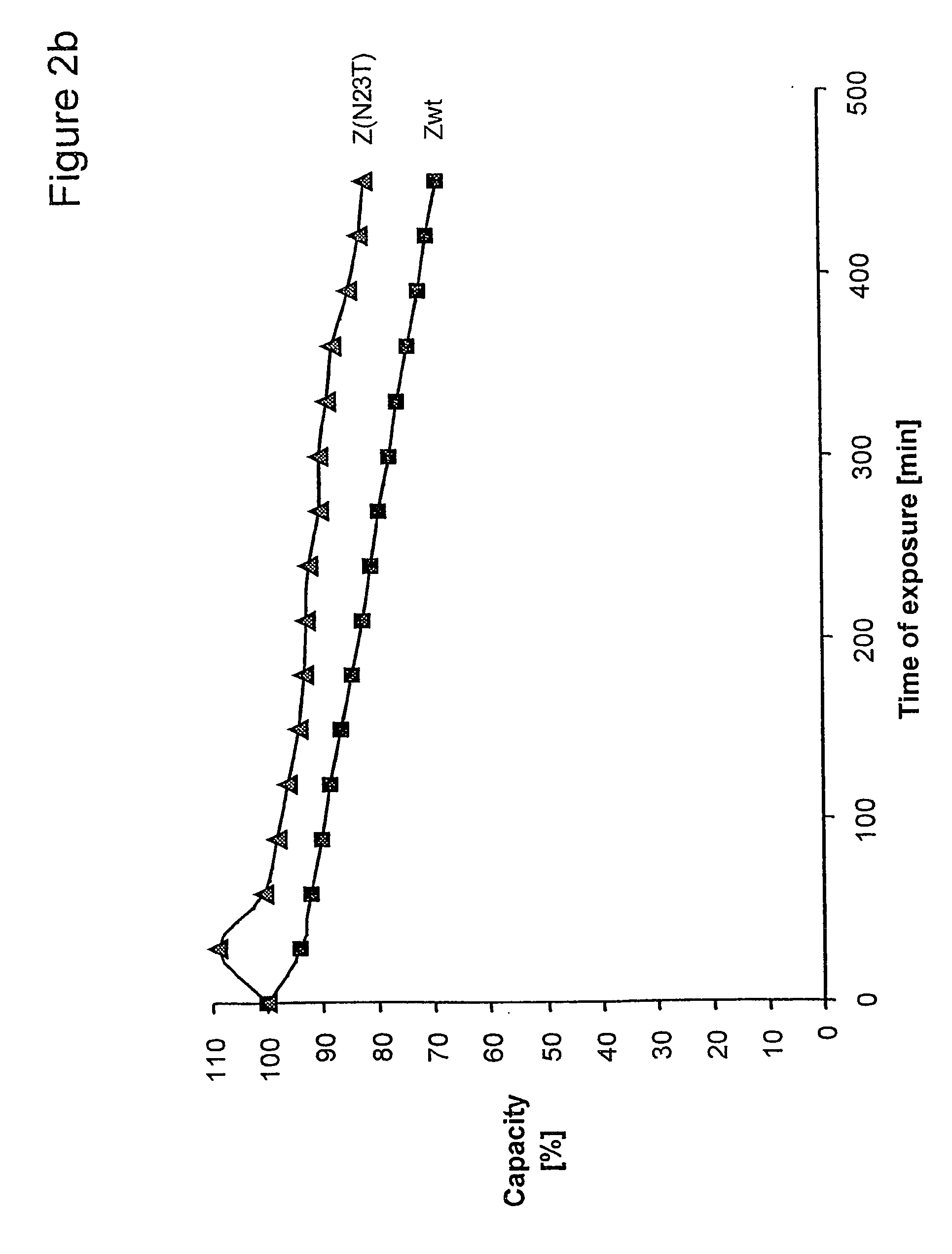Mutated immunoglobulin-binding protein
a technology of immunoglobulin and protein, applied in the field of mutant proteins, can solve problems such as capacity decline, and achieve the effects of improving cleaning tolerance, improving stability, and increasing ph-values
- Summary
- Abstract
- Description
- Claims
- Application Information
AI Technical Summary
Benefits of technology
Problems solved by technology
Method used
Image
Examples
example 1
Results (Example 1)
[0090] All Z variants were successfully produced intracellular in E. coli at 37° C. and show the same expression levels, approximately 50 mg / l as estimated from SDS-PAGE. The proteins were all purified by IgG affinity chromatography. After the purification, samples were analysed with SDS-PAGE (data not shown), lyophilised and stored for further analyses. The molecular mass for protein Z and the different mutants thereof were also confirmed by mass spectrometry. The data confirmed correct amino acid content for all mutants (data not shown). Also, structural analyses were performed on a Circular Dichroism (CD) equipment, since it previously has been proven to be suitable for detecting structural changes in α-helical proteins (Johnson, C. W., Jr. 1990. Protein secondary structure and circular dichroism: a practical guide. Proteins. 7: 205-214; and Nord, K., J. Nilsson, B. Nilsson, M. Uhlen, and P.-Å. Nygren. 1995. A combinatorial library of an a-helical bacterial rec...
example 2
Biospecific Interaction Analysis
Materials and Methods
[0091] Differences in affinity and kinetic constants of the association and dissociation states were detected on a Biacore™ 2000 instrument (Biacore, Uppsala, Sweden). Human polyclonal IgG and HSA (negative reference) were immobilised by amine coupling on the carboxylated dextran layer of a CM5 sensor chip (Biacore) according to the supplier's recommendations. The immobilisation of IgG resulted in approximately 2000 RU. Z. ZF30A, and the different mutants were prepared in HBS (10 mM HEPES, 0.15 M NaCl, 3.4 mM EDTA, 0.005% surfactant P20, pH 7.4) at 10 different concentrations (100-550 nM). The samples were injected over the surfaces a's duplicates in random order at a flow rate of 30 μl min−1. 10 mM HCl was used to regenerate the surface. The data was analysed using the BIA evaluation 3.0.2b software (Biacore AB). The signals from a control surface immobilized with HSA were subtracted from the IgG surface. A 1:1 Langmuir model ...
example 3
Results (Example 3)
[0094] Z, Z(F30A), and mutants thereof were covalently attached to HiTrap™ columns using NHS-chemistry. IgG in excess was loaded and the amount of eluted IgG was measured after each cycle to determine the total capacity of the column. Between each cycle the columns were exposed to CIP treatment consisting of 0.5 M NaOH. After 16 pulses, giving a total exposure time of 7.5 hours, the column with the Z(F30A)-matrix shows a 70% decrease of the capacity. The degradation data in FIG. 2a suggest that four of the exchanged asparagines (N6, N 1, N43 and N52) are less sensitive to the alkaline conditions the mutants are exposed for in this experiment. In contrast, N23 seems to be very important for the stability of Z(F30A). Z(F30A, N23T) shows only a 28% decrease of capacity despite the destabilising F30A-mutation. Hence, the Z(F30A, N23T) is almost as stable as Zwt and thereby the most stabilised variant with Z(F30A) as scaffold. Also the Z(F30A)-domain with two additiona...
PUM
| Property | Measurement | Unit |
|---|---|---|
| path length | aaaaa | aaaaa |
| path length | aaaaa | aaaaa |
| flow rate | aaaaa | aaaaa |
Abstract
Description
Claims
Application Information
 Login to View More
Login to View More - R&D
- Intellectual Property
- Life Sciences
- Materials
- Tech Scout
- Unparalleled Data Quality
- Higher Quality Content
- 60% Fewer Hallucinations
Browse by: Latest US Patents, China's latest patents, Technical Efficacy Thesaurus, Application Domain, Technology Topic, Popular Technical Reports.
© 2025 PatSnap. All rights reserved.Legal|Privacy policy|Modern Slavery Act Transparency Statement|Sitemap|About US| Contact US: help@patsnap.com



